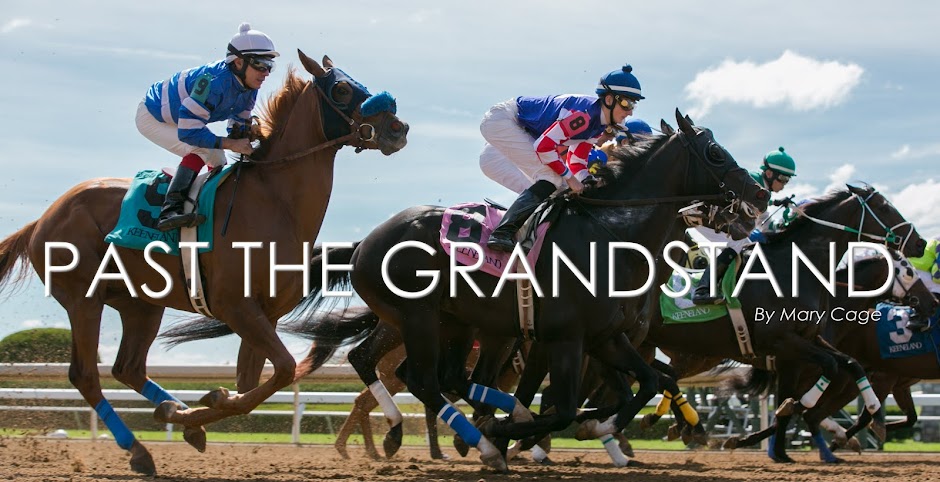Ruby Be Mine stood beneath the
December sun, her swollen belly covered in her gleaming chestnut coat that fit
her name. She was the color of a ruby stone, gazing across the backside of Lone
Star Park as if she knew she would bring the highest price of the sale. Her
purchase price of $35,000 was nothing compared to horses sold at sales such as
a Keeneland sale or a Fasig-Tipton auction in a state such as Kentucky, but
when the fall of the hammer fell at the price when Ruby Be Mine was sold, she
became the highest-priced horse to sell at the 2011 Fasig-Tipton Texas December Mixed Sale.
 |
| Ruby Be Mine at the Fasig-Tipton Texas December Mixed Sale Photo by Mary Cage |
I came across the mare the day
before she was sold at the aforementioned sale and was impressed by her classy
appearance. When I learned that she had been the sale-topper, it came as no shock.
The black-type-placed track record-setter had already proven herself to be a
successful producer, which is no surprise, as her dam is the black-type-winning
Hyper and Saucy, who also produced the dam of the black-type placed My Abbie
and is a half-sister to the black-typed placed Key to the Sauce and to the dam
of the black-type winning Magic Power. Descending from female family nine, Ruby
Be Mine comes from the same female family as the dams of the great horses
Alydar, Bull Lea, Fair Play, Galileo, Mahmoud, Nasrullah, Sea the Stars, Sir
Barton, and Shergar.
Four months after Ruby Be Mine
was sold, I stood alongside the Lone Star Park rail as a mare with a chestnut
coat and white blaze triumphed in the JEH Stallion Station Stakes for accredited
Texas-bred fillies and mares. With her win, the victor further stamped Ruby Be
Mine as a productive broodmare, as the winner of the race was Ruby’s Big Band,
a five-year-old daughter of Ruby Be Mine.
 |
| Ruby's Big Band winning the JEH Stallion Station Stakes Photo: Terri Cage |
Breeder W.S. Farish of Lane’s
End Farm fame sent Ruby Be Mine to Bowman’s Band in 2006 for the mare’s second
mating. The result was Ruby’s Big Band, who would quickly display talent on the
track. As a juvenile, she started ten times, winning in four races. Of those
four wins, Ruby’s Big Band captured three black-type races in Canada. She has
continued her black-type performances, scoring in five black-type races since
her two-year-old career. In fact, two-thirds of her starts have come in
black-type races.
It was certainly fascinating to
see the offspring of a mare who caught my attention at the Fasig-Tipton Texas
December Mixed Sale win a black-type race before my eyes. Witnessing Ruby’s Big
Band’s victory exhibited just how rewarding it can be to find a horse at a sale
and follow it or its offspring from then on. I found the experience to be very
satisfying, giving me even more motivation to follow horses I find in sales.
Remember to like Past the Grandstand on Facebook and follow Past the Grandstand on Twitter! Links can be found on the right side of the blog.

No comments:
Post a Comment